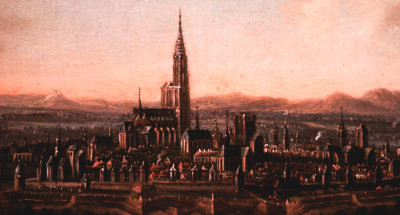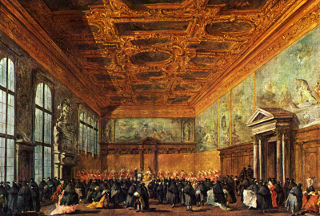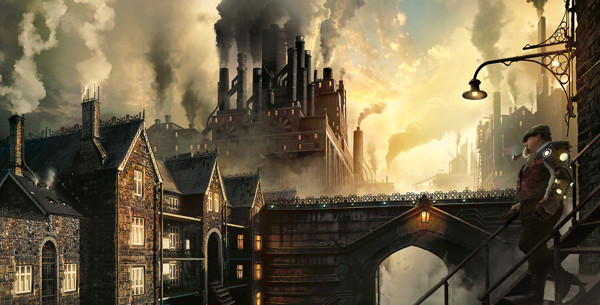Kingdom of Armillia
Capital: High Caelavar, but economically, Corradon
Ruler: King Darius Anthocles IV
Govn’t: Parliamentary Republic
Language: Celanic (official)

Armillia was one of the first nations to recover following the War of Golla and Marada over 1500 years ago. The Stronghold of Corradon became a bastion of civilization and was ruled by kings determined to bring stability to a world shattered by terror, anarchy, and war. By the 7th century of the Common Age, Armillia had united with its neighboring kingdoms to form the great Kingdom of Celania. Together with the Republic of Glaven and the Regency of Relmar, the Kingdom of Celania ushered in the new golden age known today as the Age of the Three Realms.
The 13th century of the Common Age saw the gradual decline of the Three Realms, and by 1250 CA, Celania had fallen into a brutal period of succession wars, now known as the Patrician War. This conflict left Celaphania vulnerable, and in the power vacuum created by the decline of the Three Realms, the new Tricarian Triumvirancy seized its chance. In 1320, Triclops forces invaded Southern Celaphania. The war raged on for 10 years, but was finally won in 1330 CA by the united armies of the valiant resistance fighters.
The history of Armillia as an independent kingdom began following the War of Tyranny. Darius the Valiant, a hero of the war, became the first king of Armillia. Corradon was rebuilt as the industrial centerpiece of the new nation and soon became known as the Clockwork City.
Today Armillia is the most advanced nation in Celaphania, both in terms of cultural sophistication, and its development of science, industry, and magic. Only the mighty industrial war machine of the Grand Imperium exceeds Armillia in terms of raw production power and technological advance. The great city of Corradon stands as a monument to the Age of Progress—a vast metropolitan jungle of bustling market plazas, alchemical refineries, and automatronic manufactories, crisscrossed by bustling streets and thundering steamrail lines.
Clockwork City of Corradon
Capital: Corradon
Ruler: Lord Governor
Govn’t: Semi-Autonomous Municipality
Language: Celanic (official)
Corradon is the largest city in the world with a population over 5 million. Although the Corradon is not the capital of Armillia (High Caelavar is the capital) Corradon is, essentially, Armillia’s economic and industrial capital.
The city is packed with crowded streets, residential blocks, shopping plazas, restaurants, banks, manufactories, businesses, refineries, tenements, townhouses, airship docks, and practically everything else imaginable. The city is so large that it must be navigated in various “levels”, which vary from district to district, with streets and steamrails descending into tunnels and corridors branching out into vast, sub-city caverns sprawling below the crowded streets of the Clockwork City. Further down beneath these are the derelict levels, which are considered degenerate slums. Deeper still are the Underworks, and the uncharted depths of legend and lore, where lurk the nightmares and wonders of the ancient world.
You can read more about the Clockwork City of Corradon here.
Republic of Glaven
Capital: Falmore-Glave
Ruler: Grand Signor Kalador
Govn’t: Mercantile Oligarchy Republic
Language: Tulsan (official) and Celanic
Although not the largest or most powerful nation by any measure, Glaven’s history extended back to the dark ages of antiquity, long before the days of Keshim and Elinica. The great city of Glavern (eventually to be known as Falmore-Glave) served as the capital of Elinica and would later become the western capital of Marada. During the Age of Marada, Glavern grew into a spectacular metropolis of reaching towers and crystal palaces, but the city was utterly obliterated in the course of the War of Golla and Marada.

Over the next 700 years, the war-torn region slowly recovered. By 820 CA, the warring fiefdoms of the west united to form the Republic of Glaven. Its capital, Falmore-Glave, was built on top of the ancient ruins of Glavern. When the Tricarian Triumvirancy launched its campaign of conquest against Celaphania in the War of Tyranny, the surviving forces of the Three Realms mustered in Glaven to turn the bloody tide of war.
As the only nation of the Three Realms to have survived the War of Tyranny, Glaven quickly exerted its influence across the western Medrean. With the former aristocracy in turmoil, the wealthy merchant houses exerted their control over the cities, towns, and estates of Glaven. They declared Glaven a free republic, officially dubbed “the Most Serene Republic of Glaven.”
Republic or not, Glaven is ruled today by an oligarchy of wealthy merchant and landowning families, each scheming and plotting to bring prestige to their own house and undermine their enemies. Grand Signor Kalador, head of the wealthy Torvanni family, sits at the head of the Republic’s governing Signoria. Unlike many of his predecessors from other families, Kalador is well respected by both the aristocracy and citizenry alike, chiefly due to his lavish generosity.
Regency of Relmar
Capital: Avanon
Ruler: Regess Ariadonna IV
Govn’t: Elected Regency with Representative Parliament
Language: Celanic (official)
Following the War of Golla and Marada, most of the region of Relica, like the rest of the world, collapsed into chaos and barbarism. By 500 CA, the barons and warlords of northern Relica had established a collective confederation of territories known as the Relican Warhold. With the formation of the Three Realms the fiefdoms of the Relican Warhold became the Regency of Relmar, headed by a Regent who was elected by the Council of Nobles, in lieu of a king.

In 1108 CA, Duchess Lieanna became the first Regess of Relmar following the death of her husband, then regent. Much loved by the citizens, she ruled for 22 prosperous years until her death in 1130 CA. Several more regesses would rule over the next hundred years, and the people made no small show of affection for their powerful matriarchs. Because of this, by the middle of the 13th century of the Common Age, the Council of Nobles had little choice but to elect a noblewoman, rather than a nobleman, to rule the Regency.
The Regency of Relmar was destroyed during the War of Tyranny, after suffering some eight years of brutal occupation and countless atrocities. Following the end of those dark times, the surviving nations of Celaphania worked to rebuild. Although the “Greater Regency of Relmar” was no more, the Regency was reestablished in 1332 CA and Countess Ariadonna was elected to serve as regess. In the 200 years following the crowing of Countess Ariadonna, 12 more regesses have been elected to the throne.
Today, the Regency of Relmar stands as one of the great kingdoms of Celaphania, second only to the Kingdom of Armillia and equal, both economically and militarily, to the Republic of Glaven. Even so, Relmar does not enjoy the same status of high society and culture enjoyed by Armillia and Glaven. Many perceive Relmar much as they perceive her less affluent neighbors Crethia and Seranosa—as a pastoral country of rural farms and backwater villages, dotted by a few well-developed port cities. In spite of this, the reigning regress, Ariadonna IV, not only commands the love and respect of her people, but also that the great noble houses of the Medrean.
Eldren Kingdom of Freyor
Capital: Tae Elernon
Ruler: The Erunné Cynaéra and Council of Tribes
Govn’t: Collective Kingdom of Freeholds
Language: Talic (official) and Celanic

The region of Freyor has always been at the heart of Eldren culture and civilization. Although there are numerous other Eldren kingdoms scattered throughout Celaphania, Freyor (formally known as Tyran Vey) is the largest and most illustrious. Tae Elernon has long served as the capital of Eldren culture in Celaphania, being the seat of the Cynaétha Talarré (the Council of Tribes) and home of the Erunné Cynaéra (High King, or “Chief of the Council”).
Unlike humans and Dworghs, Eldren never existed in great numbers, and the Thanathage unleashed by the demons of Atracus at the end of the War of Golla and Marada brought their races to the verge of extinction. By 500 CA the Eldren had rebuilt Tae Elernon and revitalized extensive regions of Freyor. Unfortunately, Freyor found itself among the first regions beset by the armies of Tricar during the War of Tyranny. The beautiful city of Tae Elernon was burned to the ground. Following the War of Tyranny, Tae Elernon was rebuilt in the ancient style with marble, stone, crystal, and wood shaped by Eldren magic into great white towers, high-vaulted halls, and embellished arches. Years later, visitors to Tae Elernon would comment on how well its ancient structures had withstood the War of Tyranny, unaware that the Eldren capital had been completely rebuilt.
Today, Freyor is home to both Eldren and humans, as well as a smaller population of Dworghs from the Arcrest Mountains. Trade and political alliances with Seranosa, Relmar, and Armillia remain strong, and as peaceful and idyllic a country as Freyor is, the Eldren maintain a considerable militia and naval force with the valiant motto “Never Again Tyranny.”
Dworghen Kingdoms
Capital: Multiple
Ruler: High King Hjalmar XIV
Govn’t: Aristocratic Caste System
Language: Dworghen (official)
The Greater Dworghen Kingdoms are those kingdoms of the Great Barrier Mountains and the Western Mountains further south. Anywhere from one to two dozen independent Dworghen kingdoms have existed in these mountains, and many of them recognize a High King (or Kröngr thal-Valäj, meaning “King Who-is-Mightest”) who has traditionally ruled the great Dworghen Kingdom of Geldminär. The Lesser Dworghen Kingdoms are the scattered kingdoms and clans found in the Pyridine Mountains, the Black Mountains, the Blue Mountains, the Arcrest Mountains, the deep caverns of Elderdeep, and various mountain ranges in Tarrona. These scattered kingdoms are not aligned in any way with the Greater Dworghen Kingdoms. The island of Nuram is also controlled by a faction of Dworghen clans who have formed a mercantile empire from the mining of novarite from the volcano Novarus.

Dworghen society is organized along a rigid caste system with the king and aristocracy at the very top. The major casts are the Royals (kings and princes), the Aristocracy (lords), the Elite (wealthy but non-noble), the Generals (military elite), the Warriors (champions or officers), the Smiths (skilled craftsman and forgers), the Merchants (merchants, traders, and businessmen), the Miners (skilled mine workers and prospectors), the Soldiers (who serve under the Warriors), the Workers (non-skilled workers who do all other tasks), and the Exiled (Dworghs who have been exiled or imprisoned). While Royals are above Aristocrats and Aristocrats are above everyone else, the Elites and Generals are on equal levels. The Warriors, Smiths, Miners, and Merchants are also on equal level with each other. Workers, who perform menial tasks such as cleaning, farming, non-skilled mining, and bookkeeping, are lowest in the caste system. Exiles are reserved for those Dworghs who have been exiled or are imprisoned. Curiously, brewers and cooks, who would ordinarily be considered Workers, are actually held in higher esteem and are considered Smiths—they are, in essence, beersmiths and foodsmiths. There are even epic poems of legendary brewmasters and chefs, just as there are of great kings and warriors.
